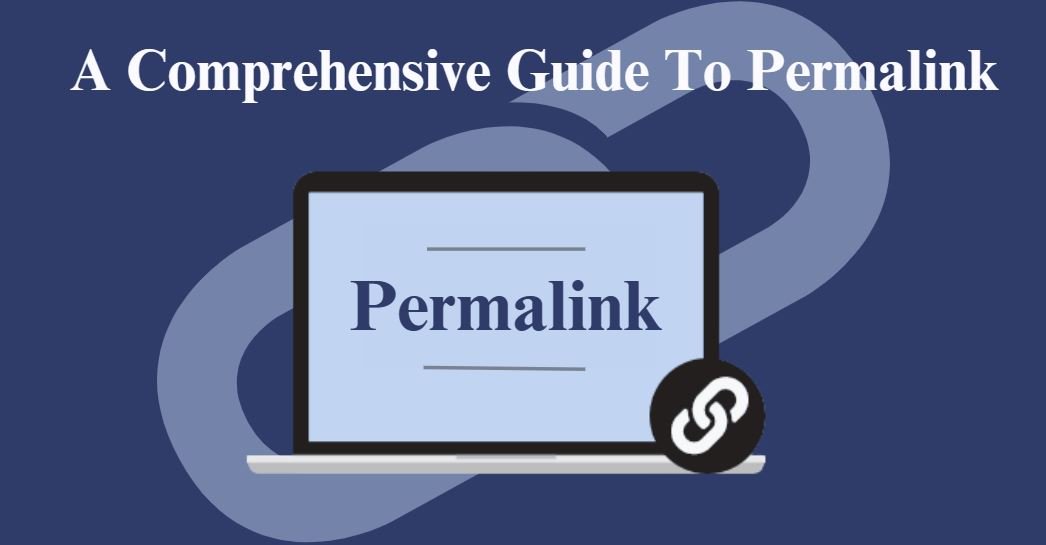Website design is like the storefront of your digital business. It doesn’t matter how great your products are—if your website isn’t inviting and easy to navigate, potential customers will leave before they even get a chance to see what you offer. More than just the aesthetics, the design of your website significantly affects your SEO rankings.
Importance of Website Design in SEO Rankings
· User experience (UX): Website design plays a crucial role in providing a positive user experience, which is a key factor in SEO.
· Mobile compatibility: Google prioritizes mobile-friendly sites. Your design should be responsive on all devices.
· Site speed: A slow site leads to higher bounce rates, affecting your SEO.
In concise, website design isn’t just about looks; it’s also about how it works.
Overview of the Blog Content
In this comprehensive guide for marketers, we will explore how website design influences SEO rankings in more depth. We’ll cover topics like responsive design, site speed, content layout, usage of stock photos, and how you can optimize these elements to boost your rankings, visibility, and ultimately, conversions. Stay tuned!
Website Design Factors That Impact SEO Rankings
When it comes to website design, there are several broad areas that marketers must consider. How your website is designed influences a multitude of factors that impact your SEO rankings. You likely already know how critical SEO is, so we’re going to take you through some key areas that you should consider when designing or redesigning your site.
Responsive Design and Mobile-friendliness
In today’s digital era, having a site that is both responsive and mobile-friendly isn’t just a nice-to-have — it’s essential. Considering that over half of worldwide website traffic comes from mobile devices, a non-responsive, non-mobile-friendly site will not only annoy your visitors but can also hurt your SEO rankings. Google takes mobile-friendliness into account when ranking websites, so be sure to build a site that looks and functions well on all devices.
Page Loading Speed and Performance
Speed matters. Users (and search engines) appreciate websites that load quickly. A slow site translates to longer wait times for your visitors, which can result in higher bounce rates, lower conversion rates, and ultimately, lower SEO rankings. There are many ways to optimize your web pages’ speed, including optimizing image sizes, reducing the number of plugins, and using caching.
URL Structure and Hierarchy
URLs play a significant role in site navigation, user experience, and yes, SEO too. Effectively structured URLs help both people and search engines understand what a page is about. Short, descriptive, and well-organized URLs get priority in search results over longer, less descriptive ones.
Navigation and Site Architecture
A well-structured website with easy navigation not only makes for a better user experience but also makes it more straightforward for search engine bots to crawl your site—and when bots can crawl your site more quickly and effectively, your site is likely to enjoy better SEO rankings. Keep your navigation menu simple, clear, and intuitive.
Use of Clean and Readable Code
Search engines like Google thrive on well-structured, clean, and readable code. Using good coding practices ensures that your site is more agile, transparent, and easier for search engine spiders to crawl and index, which in turn can boost your SEO rankings.
Image Optimization
A picture may be worth a thousand words, but an improperly optimized image can cause your site to rank poorly in search results. Correctly optimized images can improve your load times and enhance your SEO. Remember to use relevant file names, resize your images appropriately, and always include alt text.
Use of Meta Tags and Headers
Well-crafted meta tags (including titles, descriptions, and keywords) and correctly used header tags (H1,
can significantly improve your chances of ranking higher. They provide search engines with valuable information about your page’s content and organization, which raises visibility.
User-friendly and Intuitive Design
A user-friendly design isn’t just for your visitors—it’s a factor search engines consider when ranking sites. Design elements should guide the user smoothly from one section to the next, with intuitive design leading to higher user engagement, lower bounce rates, more backlinks—all signals to search engines that your site is worth indexing highly.
Remember, these are just a few of the many website design factors that impact SEO. A well-designed website goes beyond aesthetics—it plays a vital role in how your website is seen and ranked by search engines.
Optimizing Website Design for Better SEO Rankings
Optimizing a website design to improve SEO rankings requires thoughtful attention to a variety of key factors. Let’s break them down, one after the other.
Conducting a Website Audit
A comprehensive website audit is the first step. This process will help you identify the areas in your site that may need improvement or modifications. From broken links to missing metadata, an audit will shed light on potential obstacles to SEO performance. Some tools to consider for this job include Google Search Console and SEMrush.
Implementing Responsive Design or Mobile Optimization
In today’s digitally oriented society, a mobile-friendly website is no more a luxury, it’s a must. Google’s mobile-first indexing approach clearly indicates the significance it attaches to sites that perform well on mobile devices. Therefore, employing a responsive design or ensuring mobile optimization is crucial for SEO success.
Improving Page Loading Speed
Slow loading speed can be frustrating for users and can lead to increased bounce rates, potentially harming your SEO efforts. To improve your page speed, consider optimizing images, caching pages, minimizing HTTP requests, and utilizing CDN (Content Delivery Network).
Optimizing URL Structure and Hierarchy
A clean, organized URL structure can significantly improve a site’s SEO ranking. It should be easy to read and understand, both by humans and by search engine spiders. Hierarchy in URLs is also vital as it gives search engines an idea about the structure and depth of the content on your website.
Enhancing Navigation and Site Architecture
Enhancing site navigation can dramatically improve your user experience and consequently your SEO performance. A site that is easy to navigate will result in a lower bounce rate and encourage users to stay longer, which can surely boost your SEO rankings.
Ensuring Clean and Readable Code
Having a clean, well-commented code makes your website more readable to search engine bots, ultimately improving your SEO ranking. Using CSS and JavaScript effectively, removing unnecessary plugins, and cleaning up your HTML can streamline your website and improve its performance.
Optimizing Images
High-quality images can significantly improve user engagement, yet these images often contribute to slow page loading speeds. To optimize images for SEO, consider compressing image files without losing quality, using appropriate file types, and including descriptive alt text and filenames.
Utilizing Meta Tags and Headers Effectively
Meta tags and headers serve as concise snippets that provide search engines with relevant information about your web page. Hence, using them effectively is key to improving your SEO ranking. Be sure to include keywords and make meta descriptions enticing to encourage click-throughs.
Enhancing User Experience through Design
Lastly, optimizing the user experience (UX) through design is a great way to boost SEO. An efficient design encourages longer page visits and increases the chances for conversions. Intuitive, aesthetically pleasing design and user-friendly interfaces can greatly improve the user experience, leading to better SEO rankings.
Through the well-planned optimization of your website design, you can dramatically enhance your website’s performance and achieve higher SEO rankings. Start implementing these strategies today to make a real impact on your site’s visibility and user experience.
Case Studies: Successful Examples of Website Design Impacting SEO Rankings
Let’s dive into real-world scenarios where website design has proven to be a pivotal factor in boosting SEO rankings.
Case Study 1: Company X Redesigned Their Website and Experienced a Significant Boost in SEO Rankings and Organic Traffic
Company X, a big player in the tech industry, recently decided to give their website a fresh look. Upon implementing the changes, they not only saw an aesthetic improvement but also experienced a considerable increase in organic traffic and SEO rankings. This is a classic example of how a thoughtfully implemented website redesign could end up being a game-changer for your SEO strategy.
Case Study 2: The Impact of UX Design on SEO Rankings – A Comparison of Two Websites in the Same Industry
Consider two companies – Y and Z, both operating in the health and wellness sector. Company Y has a static website with a cluttered layout, while Company Z boasts a dynamic, user-friendly interface. Over time, Company Z’s website consistently ranks higher on search engines. This comparative case study underlines the crucial role that UX design plays in SEO.
Case Study 3: Utilizing Responsive Design and Mobile Optimization to Improve Rankings in Mobile Search Results
Lastly, we have the case of a small start-up shifting their focus toward mobile users by employing responsive design and mobile optimization strategies – their website’s rankings skyrocketed on mobile search results, clearly demonstrating that website design aspects like mobile responsiveness considerably impact SEO outcomes.
Tips for Marketers: Leveraging Website Design for Better SEO Rankings
SEO is no longer just about keywords; it’s about creating an attractive, user-friendly website that search engines will scan and appreciate. Here are some methods you can employ:
Collaborating with Designers and Developers
When it comes to building your site, harmonizing with your designers and developers is crucial. Their technical expertise coupled with your marketing acumen can lead to a website that’s both aesthetically pleasing and optimized for SEO. Consider points such as website layout, navigation, and loading speed – all of these factors affect SEO.
Keeping up with Website Design Trends
Staying current with design trends not only gives your website a fresh look but often ensures your site meets the latest SEO requirements. For example, mobile responsiveness is a trend that improved SEO rankings significantly. Also, using stock photos judiciously can help in enhancing site appearances without overly affecting load times.
Conducting A/B Testing to Optimize Design Elements
A/B testing different design elements can significantly improve your website traffic and engagement rates. This might range from testing different colour palettes, layout changes, to even subtle shifts in wording. The data gathered from these tests could give you valuable insights to enhance your SEO strategy.
Regularly Monitoring and Analyzing SEO Rankings and Website Performance Metrics
Stay ahead of the game by consistently monitoring your site’s metrics. Track your SEO rankings, bounce rates, and time spent on your site to identify areas needing improvement. The link between website design and SEO is dynamic, so maintaining a finger on the pulse of your website’s performance is critical.
Conclusion
Recap of the blog content
In this guide, we’ve discussed how crucial website design is for your SEO rankings. We dived into the importance of a clean, user-friendly design, mobile optimization, website speed, and relevant content complete with appropriate use of keywords. We also uncovered the hidden potential of stock photos and how they can enrich your website’s SEO.
Encouragement for marketers to prioritize website design for better SEO rankings
Marketers, it’s time to shift your focus on optimizing your website design for better visibility. Don’t overlook these simple elements:
– Investing in user-friendly and mobile-optimized design
– Prioritizing website speed
– Creating relevant and engaging content
– Smart use of keywords and stock photos
Start now and observe how these small yet impactful tweaks in your website design can significantly boost your SEO rankings. After all, the power to enhance your brand visibility lies in your hands!

















